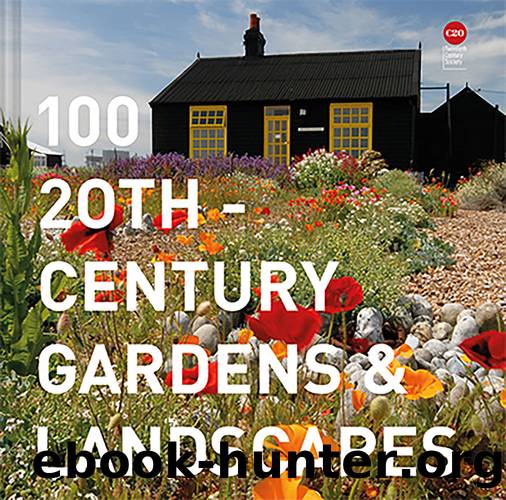100 20th-Century Gardens and Landscapes by Society Twentieth Century;

Author:Society, Twentieth Century;
Language: eng
Format: epub
Publisher: Pavilion Books
Gale Common, East Yorkshire
Ladybower Reservoir, Derbyshire
Kielder Water, Northumberland
The longest landscapes are those that follow roads. As early as 1939 Brenda Colvin attacked the Roads Beautifying Association, whose planting of flowering trees and shrubs along the carriageways of Britainâs new trunk roads she thought too pretty. The government encouraged county councils to build more roads after 1945. Colvin was the first to complain about widening minor roads and the imposition of standardised solutions by traffic engineers, and was among many who criticised the hard, sharp lines and clumsy angles of the first phase of the MI, as well as the fussy planting selected by foresters. Though originally planned for fast cars, container lorries had the greatest impact on motorway design, because they needed gentle curves and shallow gradients. Colvin emphasised the importance of shaping a road to the contours and creating landscapes to be seen at speed, while Sylvia Crowe complained about the hard edge created by continuous fencing and the heavy lines of the early bridges. Both favoured the split of carriageways, with central reservations of varying widths, particularly on open, hilly ground. Following so much criticism, the Ministry of Transport appointed its own landscape architect, Michael Porter, in 1961, and considered the aesthetics of alignment, bridges and landscaping, planting boldly using mainly native species.
Ecological concerns were aroused in the United States with the publication in 1962 of Rachel Carsonâs Silent Spring, and in 1969 by Ian McHargâs polemical Design with Nature. They were followed in Britain by Nan Fairbrotherâs wide-ranging New Lives New Landscapes, published in 1970, coinciding with European Conservation Year, and its very title redolent of the new perception of landscape as encompassing the whole environment. Landscape architects turned to the reclamation of derelict land, with Clifford Tandy producing trails and sporting facilities at Stoke-on-Trent, Brian Clouston designing recreational land at Tow Law and the Centre for Alternative Technology reclaiming 40 acres (16.18ha) of a disused quarry at Machynlleth in Wales, opened in 1975.
When Crowe asked friends for their thoughts on Rutland Water, they replied âwe thought it was all natural!â Her delight in recounting the tale sums up the nebulous nature of broader landscape design â and why it needs to be better understood.
Elain Harwood
Download
This site does not store any files on its server. We only index and link to content provided by other sites. Please contact the content providers to delete copyright contents if any and email us, we'll remove relevant links or contents immediately.
Kathy Andrews Collection by Kathy Andrews(10507)
The remains of the day by Kazuo Ishiguro(7542)
Spare by Prince Harry The Duke of Sussex(4188)
Paper Towns by Green John(4163)
The Body: A Guide for Occupants by Bill Bryson(3789)
Be in a Treehouse by Pete Nelson(3206)
Harry Potter and the Goblet Of Fire by J.K. Rowling(3025)
Goodbye Paradise(2949)
Never by Ken Follett(2873)
Into Thin Air by Jon Krakauer(2695)
The Remains of the Day by Kazuo Ishiguro(2614)
The Genius of Japanese Carpentry by Azby Brown(2602)
The Cellar by Natasha Preston(2592)
Drawing Shortcuts: Developing Quick Drawing Skills Using Today's Technology by Leggitt Jim(2528)
120 Days of Sodom by Marquis de Sade(2428)
Architecture 101 by Nicole Bridge(2348)
The Man Who Died Twice by Richard Osman(2290)
Machine Learning at Scale with H2O by Gregory Keys | David Whiting(2265)
Fairy Tale by Stephen King(2058)
